The constructed home
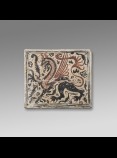
Socarrat (ceiling plaque). Paterna, 15th century. Museu del Disseny de Barcelona. Foto: Guillem Fernández-Huerta
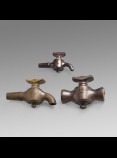
Taps for chemical industry liquids. Old Cucurny factory, Montmeló del Vallès (Barcelona), closed in the 1980s. ca. 1930. Glazed stoneware. Private collection
Photo: Guillem Fernández-Huerta
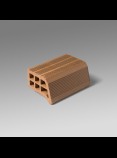
Bricks. Miguel Fisac (1913-2006). Madrid, 1952. Díaz Redondo Brothers Collection

Flooring. Paterna, Valencia, 14th century. Museu del Disseny de Barcelona. Photo: Guillem Fernández-Huerta
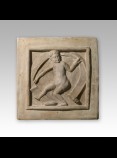
Relief socarrats (ceiling plaques). Paterna, 1st half of 15th century. Museu del Disseny de Barcelona. Photo: Guillem Fernández-Huerta
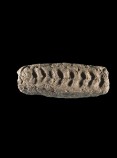
The first bricks in history. Jericho, Palestine, around 12000 BC. The Ashmolean Museum, Oxford
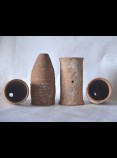
Centre elements. Ilturo, now Cabrera de Mar (Barcelona), mid-2nd century BC. Ajuntament de Cabrera de Mar

Y-shapewater conduit. Athens, 525-500 BC. Terracotta from the House of the Southeast Fountain in the agora. The Hellenic Ministry of culture and sports/ Ephorate of Antiquities of Athens, Atenes, A 2663
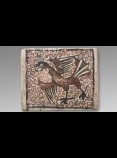
A prayer in honour of Kulla, god of bricks: ‘Kulla, god of bricks, Lord of foundations and walls, because you are kind I implore you that the house that you built may last many years’.
Keramos in Ancient Greek (where ‘ceramic’ comes from), meant clay, but also tile and brick.
From foundations to roofing, all building elements may be made in adobe or terracotta: a mixture of fine clay, water and sand or straw that stops the moulded piece deforming. 11,000 years ago, the first bricks in history were shaped with river pebbles used to construct shacks in the Palestinian city of Jericho. Four thousand years later, in Mesopotamia, wooden moulds were used to produce identical bricks to make construction easier, and structural elements such as columns were made with triangular or circular bricks. In Rome, solid H-shaped pieces of terracotta formed ribs between which were fitted with thin ceramic sheets, thus allowing vaults to be built. The arches of the Roman Republic baths at Cabrera de Mar, however, used a structure that was unique in the Roman world: hollow cone-shaped pieces were set into one another forming long ribs that curved naturally. Holes in the bases of the pieces allowed for a metal crosspiece that joined the various ribs.
Buildings were connected to the urban fabric thanks to conduits like the imposing aqueduct channels that brought water to the city of Athens in the 6th century BC.
The process of covering of open spaces with vaults and domes was improved thanks to the placing of thin fireproof ceramic pieces in a version of the typical Catalan vault designed in the latter half of the 19th century by the Valencian Rafael Guastavino.
The ease of construction with ceramic materials has sadly degenerated into the devastating ‘brick worship’ that contemporary artists have denounced, and that a new generation of artists have turned their back on by means of bare masonry houses.



